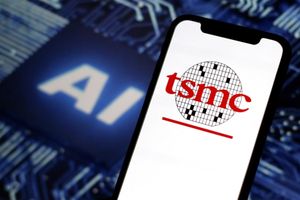– Update based on statistically significant 41% reduction in risk of death vs. previous standard of care in patients with frontline advanced classical Hodgkin lymphoma –
– First and only targeted therapy inclusive regimen to improve overall survival in this setting –
Seagen Inc. (NASDAQ: SGEN) today announced an update to the U.S. Prescribing Information (PI) for ADCETRIS® (brentuximab vedotin) to include six-year overall survival results from the phase 3 ECHELON-1 clinical trial of ADCETRIS plus combination chemotherapy in patients with previously untreated Stage III or IV classical Hodgkin lymphoma compared to chemotherapy alone. The statistically significant data were presented last year at the annual meetings of the American Society of Clinical Oncology and the European Hematology Association.
ADCETRIS was approved for advanced Hodgkin lymphoma in 2018 based on an improvement in progression-free survival in combination with chemotherapy agents AVD (Adriamycin [doxorubicin], vinblastine and dacarbazine) in the ECHELON-1 trial. Since its first approval in 2011, more than 113,000 patients have received ADCETRIS worldwide.
“The ultimate goal in cancer research is to offer the best chance for a cure. Patients with advanced classical Hodgkin lymphoma are often young adults with their whole lives ahead of them,” said David Epstein, Chief Executive Officer, Seagen. “The overall survival data are a major step forward in cancer research, and the transformative benefit offered by the ADCETRIS regimen can profoundly impact the lives of these patients.”
At a median follow up of approximately six years (73 months) in the ECHELON-1 study, the ADCETRIS combination with AVD resulted in a statistically significant 41% reduction in risk of death versus previous standard of care chemotherapy agents ABVD (Adriamycin [doxorubicin], bleomycin, vinblastine, and dacarbazine) (hazard ratio [HR] 0.59; 95% confidence interval [CI]: 0.396, 0.879) (p-value = 0.009). National treatment guidelines last year designated ADCETRIS in combination with AVD as a preferred standard of care for the disease based on the overall survival data.i
Also included in the revised PI are updated data for peripheral neuropathy at about six years. Among patients who experienced peripheral neuropathy, 72% had complete resolution, 14% had partial improvement, and 14% had no improvement. The median time to partial improvement was 2.9 months (range <1–50), and the median time to complete resolution was 6.6 months (range <1–67). Of the patients with ongoing neuropathy (28%), 57% had Grade 1, 30% had Grade 2, 12% had Grade 3, and <1% had Grade 4 neuropathy. The safety profile of ADCETRIS in the ECHELON-1 trial was consistent with previous studies, and no new safety signals were observed. Please see Important Safety Information, including a BOXED WARNING for progressive multifocal leukoencephalopathy (PML), for ADCETRIS below.
About the ECHELON-1 Trial
The ECHELON-1 trial compared ADCETRIS plus AVD to chemotherapy agents ABVD in 1,334 patients with previously untreated Stage III or IV classic Hodgkin lymphoma. The trial’s primary endpoint was modified progression-free survival (PFS) per independent review facility (IRF). A key secondary endpoint was overall survival, which was an event-driven, pre-specified, alpha-controlled analysis in the intention-to-treat population.
The combination of ADCETRIS plus AVD resulted in a statistically significant 41% reduction in risk of death vs. ABVD (hazard ratio [HR] 0.59; 95% confidence interval [CI]: 0.396, 0.879) (p-value = 0.009) with overall survival rates of 93.9% for ADCETRIS plus AVD (95% CI: 91.6, 95.5) vs. 89.4% for ABVD (95% CI: 86.6, 91.7). Six-year PFS was 82.3% for ADCETRIS plus AVD (95% CI: 79.1, 85.0) vs. 74.5% for ABVD (95% CI: 70.8, 77.7).
The ADCETRIS plus AVD combination resulted in a manageable safety profile consistent with prior reports. Treatment-emergent peripheral neuropathy continued to resolve or improve in both arms, with 86% (379/443) and 87% (249/286) of patients in the ADCETRIS plus AVD and ABVD arms, respectively, either completely resolving (72% vs. 79%) or improving (14% vs. 8%). Fewer patients reported second malignancies in the ADCETRIS plus AVD arm vs. ABVD (23 vs. 32).
About Hodgkin Lymphoma
Lymphoma is a general term for a group of cancers that originate in the lymphatic system affecting a type of white blood cell called lymphocytes. There are two major categories of lymphoma: Hodgkin lymphoma and non-Hodgkin lymphoma. Hodgkin lymphoma is distinguished by the presence of Reed-Sternberg cells that usually have a protein called CD30 on their surface. Approximately 8,830 cases of classic Hodgkin lymphoma will be diagnosed in the United States during 2023 and 900 people will die from the disease.ii
About ADCETRIS
ADCETRIS is an antibody-drug conjugate (ADC) comprising an anti-CD30 monoclonal antibody attached by a protease-cleavable linker to a microtubule disrupting agent, monomethyl auristatin E (MMAE), utilizing Seagen's proprietary technology. The ADC employs a linker system that is designed to be stable in the bloodstream but to release MMAE upon internalization into CD30-positive tumor cells.
ADCETRIS is approved across seven indications in the U.S.:
- Adult patients with previously untreated Stage III/IV cHL in combination with doxorubicin, vinblastine, and dacarbazine. (2018)
- Pediatric patients 2 years and older with previously untreated high risk cHL in combination with doxorubicin, vincristine, etoposide, prednisone and cyclophosphamide. (2022)
- Adult patients with cHL at high risk of relapse or progression as post-autologous hematopoietic stem cell transplantation (auto-HSCT) consolidation. (2015)
- Adult patients with cHL after failure of auto-HSCT or after failure of at least two prior multi-agent chemotherapy regimens in patients who are not auto-HSCT candidates. (2011)
- Adult patients with previously untreated systemic anaplastic large cell lymphoma (sALCL) or other CD30-expressing peripheral T-cell lymphomas (PTCL), including angioimmunoblastic T-cell lymphoma and PTCL not otherwise specified, in combination with cyclophosphamide, doxorubicin, and prednisone. (2018)
- Adult patients with sALCL after failure of at least one prior multi-agent chemotherapy regimen. (2011)
- Adult patients with primary cutaneous anaplastic large cell lymphoma (pcALCL) or CD30-expressing mycosis fungoides (MF) who have received prior systemic therapy. (2017)
ADCETRIS has marketing authorization in more than 70 countries for relapsed or refractory Hodgkin lymphoma and systemic anaplastic large cell lymphoma.
Seagen and Takeda jointly develop ADCETRIS. Under the terms of the collaboration agreement, Seagen has U.S. and Canadian commercialization rights and Takeda has rights to commercialize ADCETRIS in the rest of the world. Seagen and Takeda are funding joint development costs for ADCETRIS on a 50:50 basis, except in Japan where Takeda is solely responsible for development costs.
ADCETRIS® (brentuximab vedotin) for injection U.S. Important Safety Information
BOXED WARNING
PROGRESSIVE MULTIFOCAL LEUKOENCEPHALOPATHY (PML): JC virus infection resulting in PML and death can occur in ADCETRIS-treated patients.
CONTRAINDICATION
Contraindicated with concomitant bleomycin due to pulmonary toxicity (e.g., interstitial infiltration and/or inflammation).
WARNINGS AND PRECAUTIONS
Peripheral neuropathy (PN): ADCETRIS causes PN that is predominantly sensory. Cases of motor PN have also been reported. ADCETRIS-induced PN is cumulative. Monitor for symptoms such as hypoesthesia, hyperesthesia, paresthesia, discomfort, a burning sensation, neuropathic pain, or weakness. Patients experiencing new or worsening PN may require a delay, change in dose, or discontinuation of ADCETRIS.
Anaphylaxis and infusion reactions: Infusion-related reactions (IRR), including anaphylaxis, have occurred with ADCETRIS. Monitor patients during infusion. If an IRR occurs, interrupt the infusion and institute appropriate medical management. If anaphylaxis occurs, immediately and permanently discontinue the infusion and administer appropriate medical therapy. Premedicate patients with a prior IRR before subsequent infusions. Premedication may include acetaminophen, an antihistamine, and a corticosteroid.
Hematologic toxicities: Fatal and serious cases of febrile neutropenia have been reported with ADCETRIS. Prolonged (≥1 week) severe neutropenia and Grade 3 or 4 thrombocytopenia or anemia can occur with ADCETRIS.
Administer G-CSF primary prophylaxis beginning with Cycle 1 for adult patients who receive ADCETRIS in combination with chemotherapy for previously untreated Stage III/IV cHL or previously untreated PTCL, and pediatric patients who receive ADCETRIS in combination with chemotherapy for previously untreated high risk cHL.
Monitor complete blood counts prior to each ADCETRIS dose. Monitor more frequently for patients with Grade 3 or 4 neutropenia. Monitor patients for fever. If Grade 3 or 4 neutropenia develops, consider dose delays, reductions, discontinuation, or G-CSF prophylaxis with subsequent doses.
Serious infections and opportunistic infections: Infections such as pneumonia, bacteremia, and sepsis or septic shock (including fatal outcomes) have been reported in ADCETRIS-treated patients. Closely monitor patients during treatment for infections.
Tumor lysis syndrome: Patients with rapidly proliferating tumor and high tumor burden may be at increased risk. Monitor closely and take appropriate measures.
Increased toxicity in the presence of severe renal impairment: The frequency of ≥Grade 3 adverse reactions and deaths was greater in patients with severe renal impairment. Avoid use in patients with severe renal impairment.
Increased toxicity in the presence of moderate or severe hepatic impairment: The frequency of ≥Grade 3 adverse reactions and deaths was greater in patients with moderate or severe hepatic impairment. Avoid use in patients with moderate or severe hepatic impairment.
Hepatotoxicity: Fatal and serious cases have occurred in ADCETRIS-treated patients. Cases were consistent with hepatocellular injury, including elevations of transaminases and/or bilirubin, and occurred after the first ADCETRIS dose or rechallenge. Preexisting liver disease, elevated baseline liver enzymes, and concomitant medications may increase the risk. Monitor liver enzymes and bilirubin. Patients with new, worsening, or recurrent hepatotoxicity may require a delay, change in dose, or discontinuation of ADCETRIS.
PML: Fatal cases of JC virus infection resulting in PML have been reported in ADCETRIS-treated patients. First onset of symptoms occurred at various times from initiation of ADCETRIS, with some cases occurring within 3 months of initial exposure. In addition to ADCETRIS therapy, other possible contributory factors include prior therapies and underlying disease that may cause immunosuppression. Consider PML diagnosis in patients with new-onset signs and symptoms of central nervous system abnormalities. Hold ADCETRIS if PML is suspected and discontinue ADCETRIS if PML is confirmed.
Pulmonary toxicity: Fatal and serious events of noninfectious pulmonary toxicity, including pneumonitis, interstitial lung disease, and acute respiratory distress syndrome, have been reported. Monitor patients for signs and symptoms, including cough and dyspnea. In the event of new or worsening pulmonary symptoms, hold ADCETRIS dosing during evaluation and until symptomatic improvement.
Serious dermatologic reactions: Fatal and serious cases of Stevens-Johnson syndrome (SJS) and toxic epidermal necrolysis (TEN) have been reported with ADCETRIS. If SJS or TEN occurs, discontinue ADCETRIS and administer appropriate medical therapy.
Gastrointestinal (GI) complications: Fatal and serious cases of acute pancreatitis have been reported. Other fatal and serious GI complications include perforation, hemorrhage, erosion, ulcer, intestinal obstruction, enterocolitis, neutropenic colitis, and ileus. Lymphoma with pre-existing GI involvement may increase the risk of perforation. In the event of new or worsening GI symptoms, including severe abdominal pain, perform a prompt diagnostic evaluation and treat appropriately.
Hyperglycemia: Serious cases, such as new-onset hyperglycemia, exacerbation of pre-existing diabetes mellitus, and ketoacidosis (including fatal outcomes) have been reported with ADCETRIS. Hyperglycemia occurred more frequently in patients with high body mass index or diabetes. Monitor serum glucose and if hyperglycemia develops, administer anti-hyperglycemic medications as clinically indicated.
Embryo-fetal toxicity: Based on the mechanism of action and animal studies, ADCETRIS can cause fetal harm. Advise females of reproductive potential of this potential risk, and to use effective contraception during ADCETRIS treatment and for 2 months after the last dose of ADCETRIS. Advise male patients with female partners of reproductive potential to use effective contraception during ADCETRIS treatment and for 4 months after the last dose of ADCETRIS.
ADVERSE REACTIONS
The most common adverse reactions (≥20% in any study) are peripheral neuropathy, fatigue, nausea, diarrhea, neutropenia, upper respiratory tract infection, pyrexia, constipation, vomiting, alopecia, decreased weight, abdominal pain, anemia, stomatitis, lymphopenia, mucositis, thrombocytopenia, and febrile neutropenia.
DRUG INTERACTIONS
Concomitant use of strong CYP3A4 inhibitors has the potential to affect the exposure to monomethyl auristatin E (MMAE). Closely monitor adverse reactions.
USE IN SPECIAL POPULATIONS
Lactation: Breastfeeding is not recommended during ADCETRIS treatment.
Please see the full Prescribing Information, including BOXED WARNING, for ADCETRIS here.
About Seagen
Founded 25 years ago, Seagen Inc. is a global biotechnology company that discovers, develops, manufactures and commercializes targeted cancer therapeutics, with antibody-drug conjugates (ADCs) at our core. Our colleagues work together with urgency to improve and extend the lives of people living with cancer. An ADC technology trailblazer, approximately one-third of FDA-approved and marketed ADCs use Seagen technology. Seagen is headquartered in Bothell, Washington and has locations in California, Canada, Switzerland and across Europe. For additional information, visit www.seagen.com and follow us on Twitter and LinkedIn.
Forward-Looking Statements
Certain statements made in this press release are forward looking, such as those, among others, relating to the therapeutic potential of ADCETRIS, its safety, efficacy and therapeutic uses. Actual results or developments may differ materially from those projected or implied in these forward-looking statements. Factors that may cause such a difference include without limitation the level of utilization and adoption of the referenced treatment regimen by prescribing physicians, competitive conditions including the availability of alternative treatment regimens, the availability and extent of reimbursement, the risk of adverse events or safety signals, and the possibility of adverse regulatory actions. More information about the risks and uncertainties faced by Seagen is contained under the caption “Risk Factors” included in Seagen’s Quarterly Report on Form 10-Q for the quarter ended March 31, 2023, and Seagen’s subsequent reports, filed with the Securities and Exchange Commission. Seagen disclaims any intention or obligation to update or revise any forward-looking statements, whether as a result of new information, future events or otherwise except as required by applicable law.
| ____________________ | ||
i |
https://www.nccn.org/guidelines/guidelines-detail?category=1&id=1439 |
|
ii |
https://www.cancer.org/cancer/hodgkin-lymphoma/about/key-statistics.html |
|
View source version on businesswire.com: https://www.businesswire.com/news/home/20230614854786/en/
Contacts
For Media
David Caouette
(310) 430-3476
dcaouette@seagen.com
For Investors
Doug Maffei
(425) 527-4160
dmaffei@seagen.com






